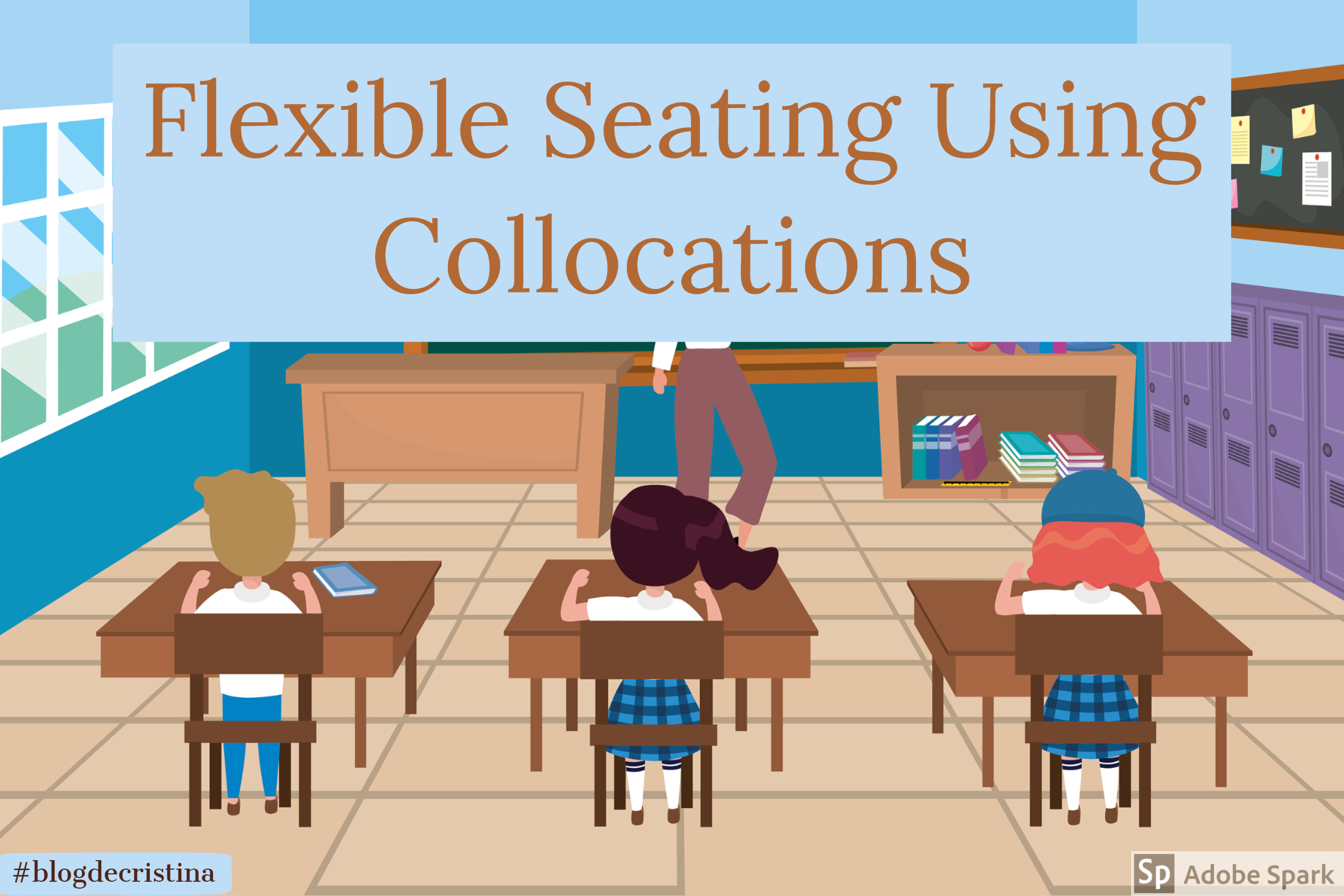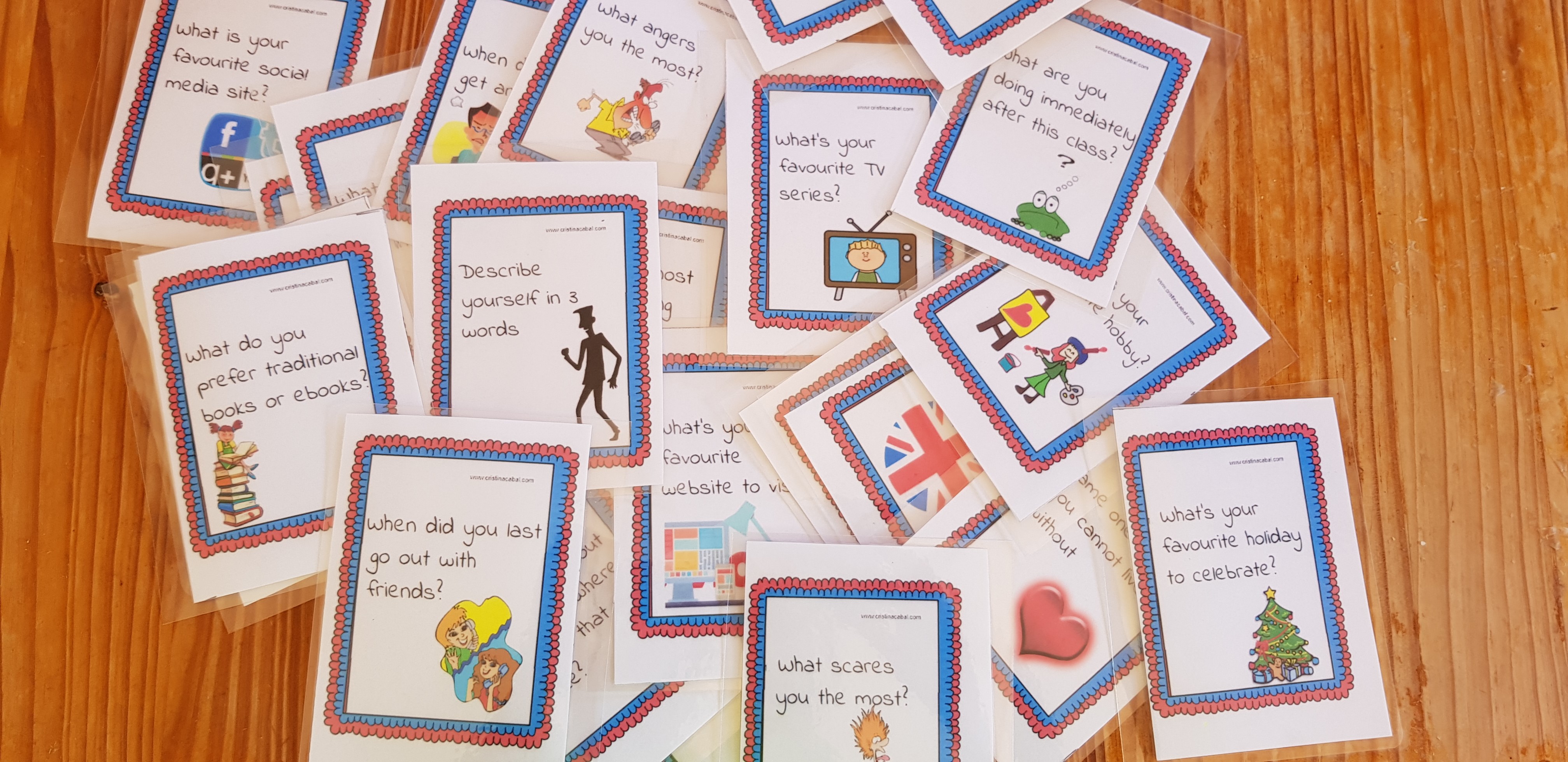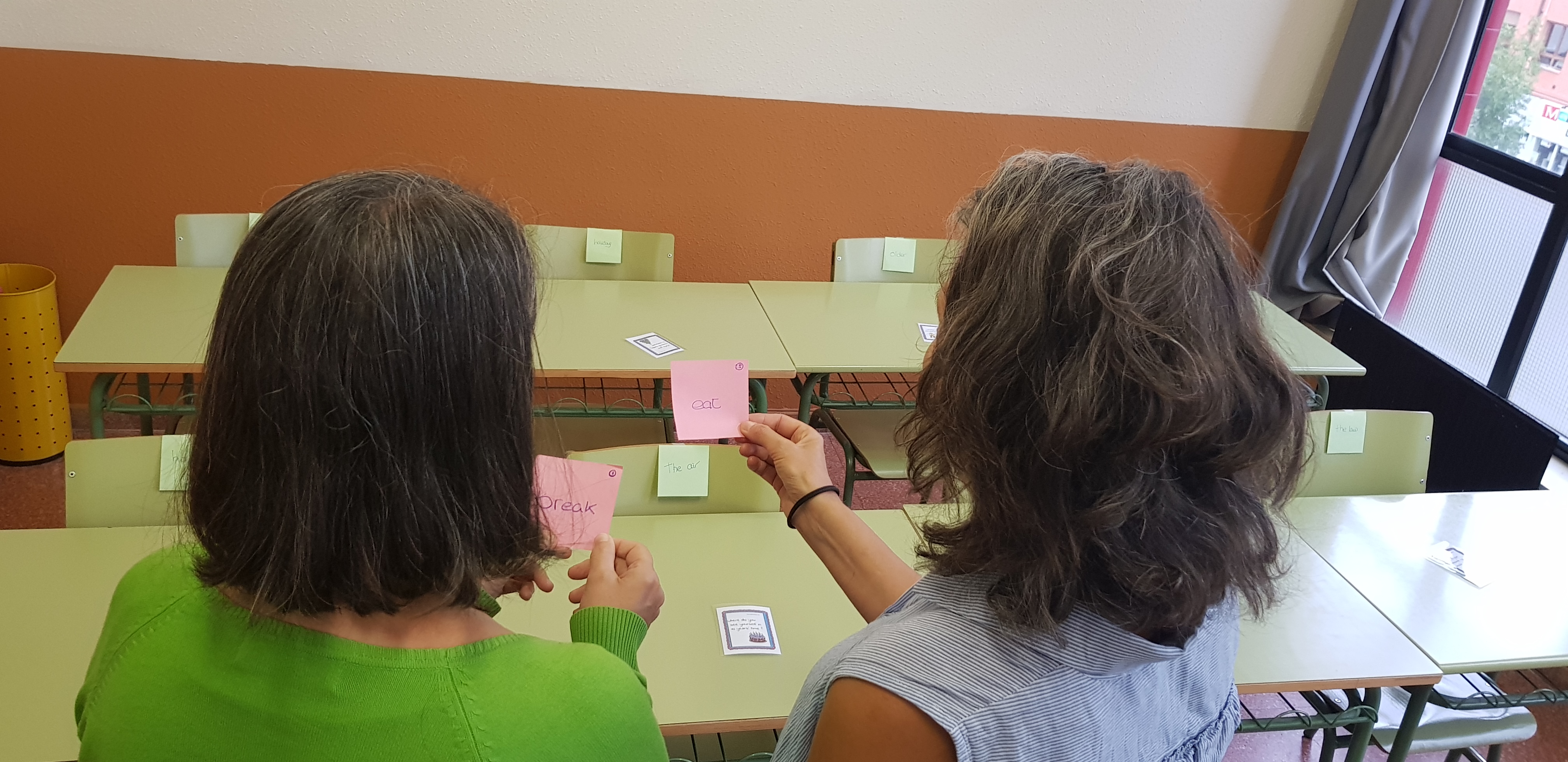What could be the advantages of sitting always in the same place working with the same partner? Can you see any? I can’t. The activity below has been designed to give students plenty of opportunities to work with different partners in an engaging way. It is very flexible and lots of fun.
But first of all, a small intro. It is my first post in a long, long time so please bear with me. 😉

It is October!
If you are wondering, no, we haven’t started classes yet. I’ll be greeting my new students tomorrow, 7th October. I can’t wait! I already know my classes are full. 25 students and some more on a waiting list. I am a bit worried because my class is tiny. One of the smallest in the premises but hey! I am not sharing it with any other teachers. It’s just for me, so I am not complaining. However, I like to do activities where students get up from their seats and move around the class and that’s going to prove difficult in this smallish class. I guess I will just need to use the hall for some activities.
Isn’t it true that we spend most of our day at school or work sitting down? And after some time, sitting down gets boring, doesn’t it? Well, in this activity students will need to stand up, move around the class and then sit down several times. Just my kind of activity. Besides, it can be adapted flexibly and creatively in different contexts and situations. At the end of the post, you can read some other ideas I have to teach or revise vocabulary using this classroom dynamics.
Aim
- to revise very common collocations
- to ask and give information about yourself
- to provide opportunities to get to know everybody in the class
- to provide a friendly environment where students do not feel uncomfortable making mistakes and can learn from each other.
Time: 30-40 minutes
Preparation:
- The collocations. Prepare a set of common collocations. You will need one per student. I have 25 students, so I will need 25 collocations. For example: break the law or fail an exam. On a card, write break or fail; on another card write the law or an exam. The cards containing the second part of the collocation (the law, an exam) should be sellotaped to the back of the chairs of the classroom, visible to all the students. I use different colours for easy differentiation. (see picture below)
- NOTE: it is important that the collocations are unique, ie, that they can only match once. For example: if you have break //the law, you cannot have twist //your arm; as break can also collocate with arm as in break//your arm. It is useful to keep a list of the collocations you are using for agility purposes.
- The questions to discuss. Prepare a set of questions; in my case, and for this class, of the type get-to-know-each-other questions. I have prepared 25 but you can easily just use half the questions and have students share and talk about the same card.

Downloadable Materials:
Procedure:
- Greet students at the door and hand them a card containing the first part of the collocation.
- Explain that they will have to find the second part by reading the cards taped on the chairs.
- Once they have found the matching card on a chair, they should sit down on that same chair.
- Quickly check that everybody has found the right collocation and if they haven’t, ask students to work out where the matching part is before you intervene. It is good to make mistakes. That’s very often how you learn.
- Ask them to say their collocation aloud so that the class can also revise it.
- Once they are in their right seats, hand them a card containing a get-to-know-you question. Encourage them to include their collocation in their conversations.
- Ask them to leave the cards containing the get-to-know-you questions on the table. They can remain there for the next students.
- Allow 6-7 minutes’ conversation and then collect the cards containing the first part of the collocation. (in the picture below, the pink ones)
- Shuffle them, hand them out to different students and repeat procedure so that students get the chance to sit in another place and talk to a different student.
- This second time, when students say their collocations aloud, ask them to pause for a second to give the class the chance to provide the second part of the collocation. This way, we reinforce without effort.

TIPS:
- I did the activity 4 times. The first time students found it harder to find the right collocation than the second time; the third and fourth time, they were incredibly quick.
- I asked students to focus on their cards and read them carefully. Sometimes, the key to finding the right collocation resides in an article or a preposition.
- The first and second time, and always before the speaking activity, I asked students to read their collocations aloud so that everybody got familiar with them. The third time, I asked them to try to remember their collocation without looking at the back of the chair. The fourth time, I asked students to read aloud just the first part and then pause, giving the class the opportunity to provide the matching collocation. Revising, reinforcing and consolidating. That’s what we are aiming for.
- At the end of the activity, I asked students to write down all the collocations they could remember and wrote them on the board to correct spelling mistakes. I gave a sweet to the student who remembered the most collocations 🙂
VARIATIONS
- Working with the vocabulary of a certain topic; on the chairs sellotape the cards containing the term and give students the cards containing the definition. For example, if I am teaching Education: on one card professor (taped on the chair) and on the other card a senior teacher at a university or college; and on the table a question such as: What was your favourite subject at school?
- Working with phrasal verbs: term//definition
- Working with compound nouns: first half// second half. For example: sitting// room
- Working with phonemic transcriptions; on one card the phonemic transcription; on the chair the card with the matching word /si:n/ seen
- Working with functional language; on one card the function in the form of a question and on the chair, a card with a possible answer. The follow-up task might be to continue the dialogue.
I don’t know. So many possibilities. The limit is your imagination.

Thanks a lot!
Excellent idea. Thanks for sharing
Excellent idea. I love your blog
Thanks Anna. You make me happy!
What a superb activity! I’ve saved it and I’m going to try it when my classes begin. Thanks Cristina.
PS – Your website is great and I’ve successfully used several of your activities.
Thanks Ann. Honoured.
Hi Cristina,
Just to let you know that we’ve shortlisted this blog post for this month’s TeachingEnglish blog award and I’ll be putting up a post about it on tomorrow’s TeachingEnglish Facebook page http://www.facebook.com/TeachingEnglish.BritishCouncil, if you’d like to check there for comments.
Best,
Ann
Thanks Carmen!!! You are going to be fine, I promise. I miss you, too! 🙂
I don’t know who you are teaching, but I miss you, teacher.
Thanks Saray!
Brilliant idea!!!